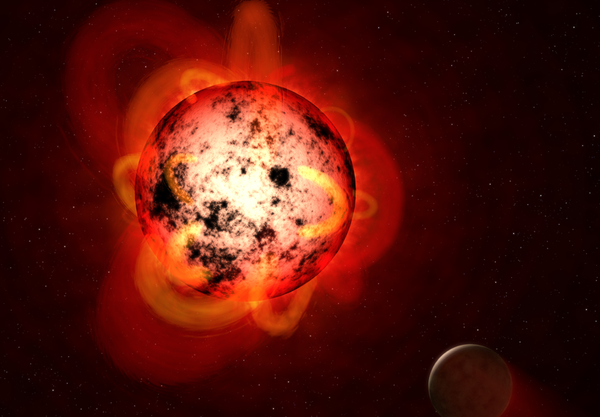This article was published in Scientific American’s former blog network and reflects the views of the author, not necessarily those of Scientific American
When we think about looking for life in the universe we very often end up talking about the concept of the ‘habitable zone’. This is commonly defined by the range of conditions where an exoplanetary environment (or for that matter an exomoon environment) might sustain a temperate climate. In other words; where liquid water might exist.
Of course, this is influenced enormously by the template of the modern Earth. But while researchers have considered possibilities for more varied options – such as alternate biochemistries that could occur on places like frigid Titan – there’s little doubt that the Goldilocks zone telling us where liquid water can occur in the cosmos is a pretty decent starting point.
Except there are immediate complications. I recently took a look at one of those complications, in the form of a fundamental thermodynamic constraint that we’ve largely ignored until now.
On supporting science journalism
If you're enjoying this article, consider supporting our award-winning journalism by subscribing. By purchasing a subscription you are helping to ensure the future of impactful stories about the discoveries and ideas shaping our world today.
You can read about this in my new paper on “Exoplanet Exergy: why useful work matters for planetary habitability” – headed for publication in the Astrophysical Journal.
The idea for this research paper came from an unexpected quarter. I’d been wondering about the often-quoted fact that living systems are places where entropy is locally lowered. In other words, life seems to fight against the 2nd law of thermodynamics which – in essence – states that you can never come out ahead. Dissipate or utilize energy and you will always end up increasing the total entropy of a system (if it’s truly isolated). In fact, the whole universe seems to be ever increasing its entropy – becoming more disordered overall. Living systems don’t really disobey this rule, but they do make their own entropy lower at the expense of adding entropy to the cosmos.
My question was whether this fact should be folded into our tools for evaluating the property of habitability? Where did entropy come into the equation?
Well, it turned out that people working in areas like ecology and even economics had been sometimes referring to an intriguing quantity called ‘exergy’. While classical entropy can be thought of as a measure of the amount of energy in a system that is unavailable for doing useful work (like driving a machine, or biochemistry), exergy is the amount of energy in a system that is available for doing useful work. Critically – the exergy takes into account the properties of a system and the environment containing it, which is why it’s handy for ecology where you might want to know what human energy use really costs.
The really neat thing is that for a planet bathed in the electromagnetic radiation from a star you can compute the exergy in a very straightforward way (with some modest assumptions). In other words, for any kind of photon-utilizing life you can ask how much exergy is available when an environment is at a particular temperature and when the star has a particular temperature and spectrum. You can also compute the maximum efficiency with which life can use the energy of those stellar photons, regardless of how that life works.
What I found is that if you want to max out available energy and efficiency for phototrophic (e.g. photosynthetic) life you really want the coldest planetary environment and the hottest star possible. That’s what thermodynamics tells us, and thermodynamics is pretty much the last word.
Translating that into actual stars and planets, it means that the smallest and coolest hydrogen-fusing stars, the M-dwarfs, are not obvious winners if you’re photon-loving life. Not only that, but we already knew that M-dwarf stars provide many fewer photons at the wavelengths where terrestrial-type photosynthesis functions best.
There’s a lot more work to do to follow on from my initial dive into this, but it looks like we need to modify even our simplest models of exoplanet habitability to account for the way exergy behaves. Of course, not all life has to be phototrophic, but on Earth that kind of life is not only the biggest energy user of all, it also seems to have been around as long as life has existed.
Combined with our suspicions that low-mass M-dwarf stars are also prone to being nasty little flare-prone beasts – potentially stripping off planetary atmospheres – the search for extraterrestrial life may have just got its hunting grounds reduced.
